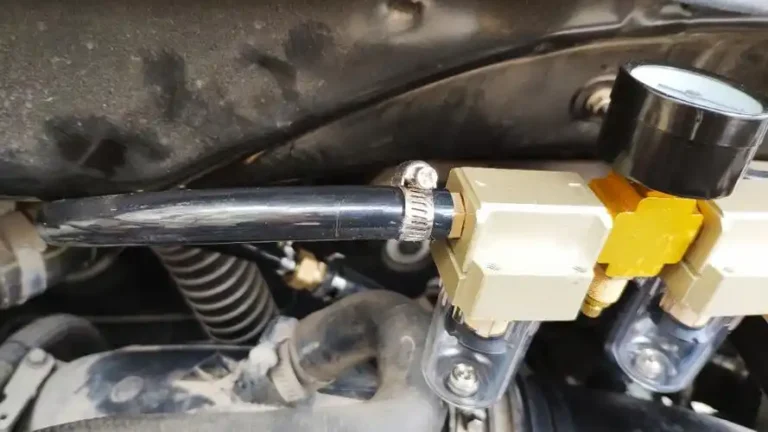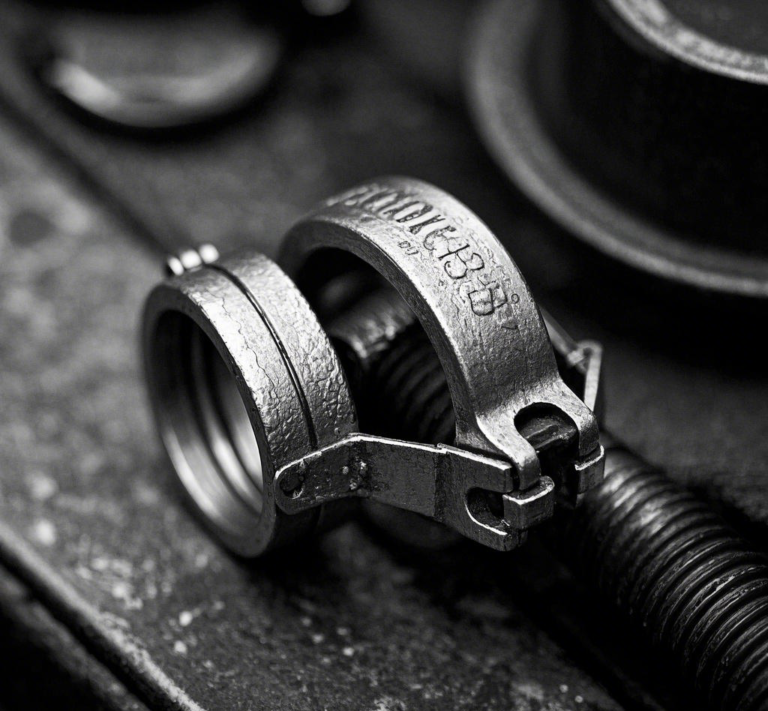Spring Steel: The Backbone of Durability and Flexibility in Modern Engineering
Spring steel is a specialty steel designed for use in springs and other components that require high elasticity. This type…
Spring steel is a specialty steel designed for use in springs and other components that require high elasticity. This type of steel has a unique combination of properties that allow it to return to its original shape without permanent deformation after repeated stress, bending or twisting. The core properties of spring steel are its excellent elastic limit, fatigue strength and toughness, which make it an indispensable material for everything from automotive suspension to precision instruments.
Spring steels typically contain a high carbon content (0.5%-1.0%) and added alloying elements such as silicon, manganese, chromium and vanadium, which work together to improve the steel’s elastic properties and durability. Depending on the specific application requirements, spring steels can be further optimized through heat treatments such as quenching and tempering to enable them to withstand millions of cyclic loads without failure.

What are the main types of spring steel?
Spring steel can be divided into several categories based on its chemical composition and production process, and each type has its specific application scenarios and performance characteristics:
1. Carbon spring steel: such as ASTM A227 (cold-drawn steel wire), A228 (music steel wire) and A229 (oil-tempered steel wire). This type of steel has a low cost and is suitable for general-purpose springs.
2. Alloy spring steel: Alloy elements such as silicon, chromium, and vanadium are added, such as SAE 5160 (chrome steel) and SAE 9254 (silicon-chrome steel), which have higher strength and heat resistance and are commonly used in automotive suspension springs.
3. Stainless steel spring steel: such as 302, 304 and 17-7PH stainless steel, have excellent corrosion resistance and are suitable for food processing, medical and marine environments.
4. High-temperature spring steel: such as Inconel X-750 and Hastelloy, which can maintain elasticity in high-temperature environments and are used in jet engines and industrial furnaces.
5. Specially treated spring steels: These include precipitation hardening types (such as 17-4PH) and maraging steels (such as Custom 455), which achieve ultra-high strength through special heat treatment.
Each type of spring steel is carefully designed to meet the stress, environmental and life requirements in a specific application, and engineers can select the most appropriate material based on operating temperature, corrosion risk, load type and cost considerations.
What are the key performance indicators of spring steel?
The core performance indicators for evaluating the applicability of spring steel include:
1. Elastic limit: The maximum stress that the material can withstand without permanent deformation. The elastic limit of high-quality spring steel can reach more than 1000MPa.
2. Fatigue strength: Durability under cyclic load, usually expressed as stress amplitude under 10^7 cycles, high-performance spring steel can reach 500-800MPa.
3. Anti-relaxation: The ability to resist the loss of elastic properties under long-term static load, which is crucial for springs that maintain tension for a long time.
4. Toughness: Expressed in impact energy (Joule), prevents brittle fracture under impact load, generally required to be greater than 25J.
5. Corrosion resistance: Especially in harsh environments, it is improved by alloy addition or surface treatment.
6. Temperature stability: Some applications require performance at high temperatures (such as valve springs) or non-brittleness at low temperatures.
These properties are balanced by precise control of chemical composition (e.g. silicon improves elastic limit, vanadium refines grain size) and heat treatment processes (e.g. tempering temperature affects toughness). Modern metallurgical techniques such as vacuum degassing and electroslag remelting further improve the purity and consistency of spring steel.
What are the heat treatment processes for spring steel?
Heat treatment of spring steel is a key step in optimizing its performance, mainly including the following processes:
1. Quenching: The steel is heated to austenitizing temperature (usually 800-950°C) and then rapidly cooled (oil quenching or water quenching) to form a high-hardness martensitic structure. For example, SAE 1095 steel is heated to 845°C and oil quenched.
2. Tempering: After quenching, tempering is performed in the range of 350-500°C for 2-4 hours to improve toughness while maintaining high strength. For every 50°C increase in tempering temperature, the hardness decreases by about 10HRC.
3. Stress relief: Low-temperature annealing at 250-300°C eliminates the internal stress generated by cold forming without significantly changing the mechanical properties.
4. Precipitation hardening: For stainless steels such as 17-7PH, a strengthening phase is formed by aging treatment (such as 510°C×1h) after solution treatment.
5. Isothermal quenching: Keep the alloy in a salt bath at the bainite transformation temperature (about 300°C) to obtain a bainite structure with both strength and toughness.
Precise control of heat treatment parameters is critical – for example, the optimal tempering temperature for silicon-chromium steel SAE 9254 is 460 ± 10 ° C, and deviation from this range can result in a more than 30% decrease in fatigue properties. Modern continuous heat treatment lines can achieve ± 5 ° C temperature control and precise quenching cooling rate control to ensure consistency in large-scale production.
What are the key applications of spring steel in the automotive industry?
The automotive industry consumes about 60% of the world’s spring steel production, and its key applications include:
1. Suspension system:
Coil springs: using SAE 9254 or SAE 5160 steel, 8-20mm diameter, with a cyclic load of up to 1.5 tons
Leaf springs: a combination of multiple layers of SAE 5160 or SUP9A steel plates, used in truck rear suspensions
Torsion bars: 20-30mm diameter SAE 4140 steel, providing space-saving suspension solutions
2. Powertrain:
Valve springs: SWOSC-V or SWO-V oil-tempered steel wire with a diameter of 2-5mm, working at 150°C and a speed of 8000rpm
Clutch springs: Withstand a clamping force of up to 500N
3. Safety systems:
Seat belt retractor springs: Stainless steel 301 or 302, ensuring emergency locking function
Airbag trigger springs: Precision small springs with a response time of <10ms
4. Other applications:
Brake system return springs
Seat adjustment mechanism springs
Gearbox shift springs
The trend of lightweighting in modern cars is driving spring steel towards high strength – for example, the use of 2000MPa suspension spring steel can reduce weight by 20%. At the same time, corrosion protection technologies such as zinc-aluminum coating can extend the salt spray test life from 200 hours to more than 1000 hours.
What is the future development trend of spring steel?
Spring steel technology is developing rapidly in the following directions:
1. Ultra-high strength:
Development of 2000-2200MPa suspension spring steel (such as Kobe Steel’s UHHS steel)
Nano precipitation strengthening technology, improving strength through 3-5nm MC carbonitrides
Ultra-fine grains to <1μm while maintaining sufficient toughness
2. Intelligent alloy design:
Using machine learning algorithms to optimize alloy composition, such as Nippon Steel’s AI-designed Cr-V-Mo-Nb microalloyed steel
High entropy alloy spring materials, such as CoCrFeNiMn series, have unique performance combinations
3. Advanced Advanced manufacturing process:
Additive manufacturing special spring steel powder to achieve complex topological optimized spring structure
Thin strip continuous casting technology produces 0.1-0.3mm ultra-thin spring steel strip for microelectronic devices
4. Environmental protection and sustainability:
Lead-free free-cutting spring steel (such as SUM24L replacing SUM24)
Low-temperature tempering process (below 300°C) reduces energy consumption by 30%
Recycled steel smelting technology to maintain high performance while reducing carbon footprint
5. Functional integration:
Self-sensing spring steel, monitoring stress state through resistance change
Shape memory spring steel, automatically restores preset shape at a specific temperature
It is predicted that by 2030, new spring steel will reduce the weight of springs by another 15-25%, increase fatigue life by 2-3 times, and intelligent manufacturing technology will reduce the production cost of spring steel by about 20%. These advances will further consolidate the core position of spring steel in modern engineering materials.







